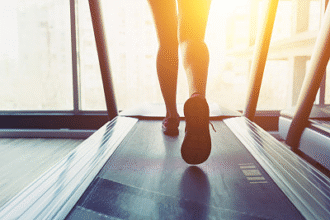Three Effective Aerobic Options for Office Workers
For people who spend long hours at a desk, the best exercise is the one you can start today and keep doing. Aerobic activity improves energy, sleep, and cardiometabolic health, and meaningful benefits begin with small, regular sessions. The following options emphasize accessibility, adaptability, and enjoyment so you can fit movement into busy workdays.
Walking and running are the most universal choices because they require little more than comfortable shoes and a safe route. You can tailor effort by adjusting speed, incline, or distance, using the talk test to stay in a moderate zone where breathing is deeper but you can still speak in short sentences. Twenty minutes of brisk walking most days is enough to meet basic health targets, and those with more time or fitness can mix in gentle jogs or short, faster segments as joints and tissues adapt. Progress gradually to reduce the risk of overuse discomfort.
Indoor cycling provides a controlled, joint‑friendly option at home or in a gym, which is especially helpful for people with knee or back sensitivity, balance concerns, or those who prefer to stay indoors. Resistance and cadence can be adjusted minute to minute to match how you feel, and brief surges of 6 to 30 seconds sprinkled into otherwise comfortable pedaling can add variety and boost training stimulus. Many entry‑level bikes are relatively affordable, and a simple fan and music can make sessions more pleasant and repeatable.
Dance‑based aerobics and group fitness classes add cognitive engagement and fun through rhythm and choreography. Because movements change frequently under an instructor’s guidance, these sessions challenge coordination and focus while keeping motivation high. Options range from classic aerobics to boxing‑inspired and martial‑arts‑style classes, and they are widely available at gyms, community centers, and online platforms. The social and musical elements help many people maintain consistency over time.
Whichever option you choose, start with a short warm‑up, finish with a few easy minutes to cool down, and increase time or intensity in small steps. Rotate activities across the week to avoid monotony and distribute load on joints and tissues. If you have chronic medical conditions, recent injury, or new symptoms such as chest pain, marked breathlessness, or dizziness, seek guidance from a clinician or qualified exercise professional. With steady, enjoyable routines, office workers can counter long sitting hours and build lasting fitness.







